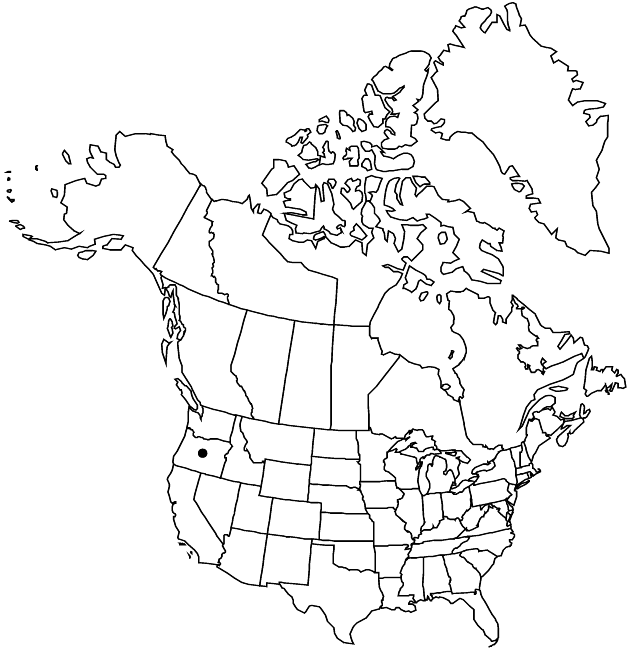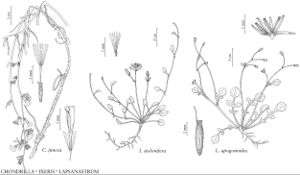Difference between revisions of "Lapsanastrum apogonoides"
Taxon 44: 19. 1995.
Common names: Japanese nipplewort
IntroducedIllustrated
Basionym: Lapsana apogonoides Maximowicz Bull. Acad. Imp. Sci. Saint-Pétersbourg 18: 288. 1873
Treatment appears in FNA Volume 19. Treatment on page 255.
FNA>Volume Importer |
imported>Volume Importer |
||
| (2 intermediate revisions by 2 users not shown) | |||
| Line 8: | Line 8: | ||
}} | }} | ||
|common_names=Japanese nipplewort | |common_names=Japanese nipplewort | ||
| + | |special_status={{Treatment/ID/Special_status | ||
| + | |code=I | ||
| + | |label=Introduced | ||
| + | }}{{Treatment/ID/Special_status | ||
| + | |code=F | ||
| + | |label=Illustrated | ||
| + | }} | ||
|basionyms={{Treatment/ID/Basionym | |basionyms={{Treatment/ID/Basionym | ||
|name=Lapsana apogonoides | |name=Lapsana apogonoides | ||
| Line 29: | Line 36: | ||
|habitat=Cultivated fields, disturbed areas, low boggy areas | |habitat=Cultivated fields, disturbed areas, low boggy areas | ||
|elevation=10–100 m | |elevation=10–100 m | ||
| − | |distribution= | + | |distribution=Oreg.;Asia (China;Japan;Korea). |
| + | |introduced=true | ||
|discussion=<p><i>Lapsanastrum apogonoides</i> is distinguished by its prostrate habit, weak stems, lyrate leaves, and 5 phyllaries spreading in fruit.</p> | |discussion=<p><i>Lapsanastrum apogonoides</i> is distinguished by its prostrate habit, weak stems, lyrate leaves, and 5 phyllaries spreading in fruit.</p> | ||
|tables= | |tables= | ||
| Line 48: | Line 56: | ||
|habitat=Cultivated fields, disturbed areas, low boggy areas | |habitat=Cultivated fields, disturbed areas, low boggy areas | ||
|elevation=10–100 m | |elevation=10–100 m | ||
| − | |distribution= | + | |distribution=Oreg.;Asia (China;Japan;Korea). |
| + | |introduced=true | ||
|reference=None | |reference=None | ||
|publication title=Taxon | |publication title=Taxon | ||
|publication year=1995 | |publication year=1995 | ||
| − | |special status= | + | |special status=Introduced;Illustrated |
| − | |source xml=https:// | + | |source xml=https://bitbucket.org/aafc-mbb/fna-data-curation/src/2e0870ddd59836b60bcf96646a41e87ea5a5943a/coarse_grained_fna_xml/V19-20-21/V19_338.xml |
|tribe=Asteraceae tribe Cichorieae | |tribe=Asteraceae tribe Cichorieae | ||
|genus=Lapsanastrum | |genus=Lapsanastrum | ||
Latest revision as of 20:51, 5 November 2020
Stems slender, weak, flattened. Leaves: basal blades 40–100 × 10–25 mm, dentate, apices obtuse. Phyllaries broadly lanceolate, thin, scarcely keeled, 4–5 mm, stellately spreading in fruit. Corollas 6–10 mm. Cypselae straight, 4–5 mm. 2n = 16.
Phenology: Flowering May–Jun.
Habitat: Cultivated fields, disturbed areas, low boggy areas
Elevation: 10–100 m
Distribution

Introduced; Oreg., Asia (China, Japan, Korea).
Discussion
Lapsanastrum apogonoides is distinguished by its prostrate habit, weak stems, lyrate leaves, and 5 phyllaries spreading in fruit.
Selected References
None.
Lower Taxa
None.
